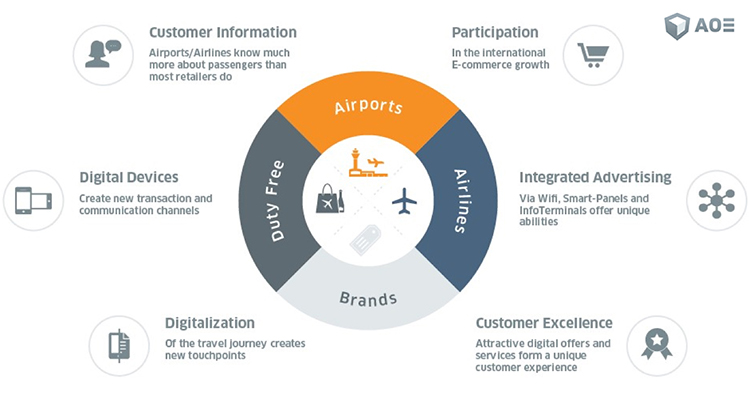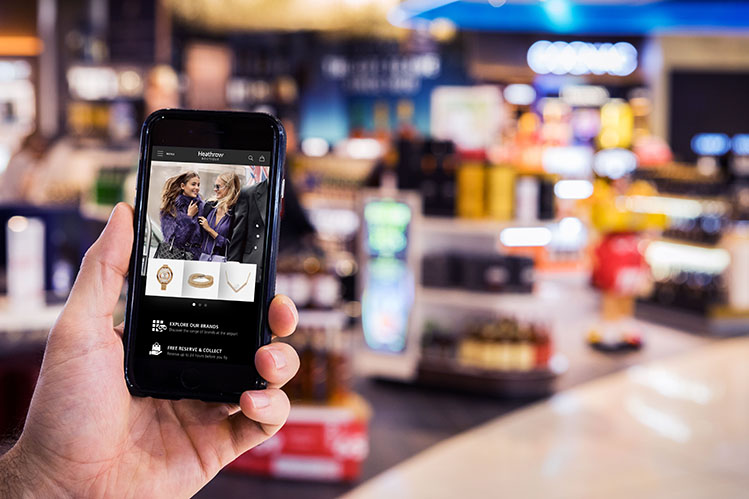By Kian Gould, Founder & CEO, AOE
For decades, travel retail was based on the assumption that passengers make their purchasing decisions spontaneously, usually in-store. Today’s travel retail reality is quite the opposite, especially amongst high-spenders. According to research company m1nd-set, approximately 70% of all passengers make their purchasing decision before entering the store.

“The New Quaternity of Travel Retail”: Cooperation of all stakeholders creates a seamless omnichannel experience for customers.
One persistent travel retail myth is that the personal touch is most essential to in-store sales. As with the decision-making process, this also does not apply in significant volumes. Only 7% of all purchases are made after getting advice from sales staff and only 2% in the high-spender category.
To make matters more difficult, stakeholders must also deal with declining per-passenger spend, and stagnating global travel retail figures, despite a steady increase in passenger numbers.

Kian Gould, Founder & CEO, AOE
Succinctly stated, the traditional business model for travel retail has peaked. Given this evident disruption, what can stakeholders do to tap new revenue streams, create satisfied customers and build sustainable business models?
Many forward-thinking global aviation hubs, airlines and retailers are answering that question by turning to e-commerce and digitalising their retail and service offerings. Here, stakeholders, especially airports, have three main advantages when competing with online retail heavyweights such as Amazon or Alibaba:
- Airports can provide immediate product availability across a large set of product ranges.
- Since customers are already at the airport, there is a low cost of return, which, in other environments can run as high as 30-60%.
- Airports have a large, built-in customer base with little to no traffic acquisition costs and can form valuable partnerships with their own airlines and cities.
The key to taking advantage of these factors is omnichannel commerce. Whether online or offline, whether PC, tablet, laptop or smartphone – stakeholders must reach the customer regardless of channel or location. Today’s mobile consumer wants the convenience of being able to purchase products at any time. The channel of choice for this is the smartphone. According to research, the average European spends close to four hours on their smartphone. In China, more than 75% of all e-commerce sales are mobile.

London Heathrow is a perfect example of airports digitalising their travel retail offerings. Its Heathrow Boutique provides numerous shopping options and services across all channels, with consumer interest being strongest in luxury items, such as watches, consumer electronics or high-end fashion.
London Heathrow is a perfect example of airports digitalising their travel retail offerings. Its Heathrow Boutique provides numerous shopping options and services across all channels, with consumer interest being strongest in luxury items, such as watches, consumer electronics or high-end fashion.
In order to be successful in this new digital travel retail environment, stakeholders must cooperate. To think only in siloes of airport, retailer or airline is outdated. We believe that success is based on what we call “The New Quaternity of Travel Retail”, which includes retailers, airports, airlines and brands. Through collaboration, these stakeholders can create a truly seamless customer experience and a digital airport ecosystem.







